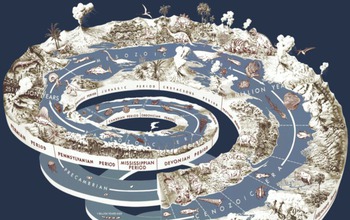| Awards offer new window into development of species, foster synthesis of biodiversity data
NSF's Genealogy of Life awards will enable scientists to take the long view of life on Earth. September 15, 2015 How and why life changes over time depends on an understanding of the relationships among living and extinct organisms (phylogeny). Over the past decade, progress in gathering and analyzing such phylogenetic data has led to an increasingly detailed knowledge of the evolutionary patterns and processes of life on Earth. It has also uncovered how much more we have to learn. To foster continued progress, the National Science Foundation (NSF) has awarded $12.3 million in its second set of Genealogy of Life, or GoLife, grants. The GoLife program is supported by NSF's Directorates for Biological Sciences and for Geosciences. The Genealogy of Life awards will advance the understanding of how new species evolve, how extinctions have happened throughout time, how present-day species adapt to changing environments, and of biogeographic and ecological patterns and processes. "The GoLife program aims to map the genealogy of all life forms on Earth," says David Mindell, GoLife program director in NSF's Division of Environmental Biology. "This genealogical framework is essential for efforts to understand the processes and timing of evolution." GoLife builds on major progress made through the previous NSF Assembling the Tree of Life (AToL) program, and leverages recent advances in the collection and analysis of data for reconstructing the evolutionary relationships of species. The GoLife program aims to resolve the evolutionary history of all species' lineages--including those living, extinct, and poorly known. It also seeks to synthesize as much data as possible, creating a unified knowledge base for comparative research. GoLife is focused on determining the genealogical patterns for all life; enhancing the use of phylogenetic knowledge across biology through the integration of biodiversity data on organisms; and training the next generation of phylogenetic biologists. An open-access, comprehensive Genealogy of Life will provide the comparative framework necessary for testing questions in systematics, evolutionary biology, ecology, and other fields, scientists say. Integration of a genealogy of life with data from genomics, ecology and other fields will produce a far-reaching synthesis of biodiversity and evolutionary sciences. "GoLife is an effort to assemble data that are critical for phylogenetic analyses, and to better understand the evolutionary relationships of organisms," says Rich Lane, GoLife program director in NSF's Division of Earth Sciences. "Deep time geologic information is crucial in placing these phylogenies into paleoenvironmental and paleobiogeographic contexts." Most species that ever existed on Earth are now extinct, says Lane. Their inclusion in the genealogy of life offers new information on the patterns and processes of diversification throughout the history of life on a changing planet. This year's GoLife grantees will study the comparative biology of butterflies; the genealogy and traits of living and fossil fish; the evolutionary history of plants; integrating environmental and physiological data on fungi; and the diversity of microbes such as malaria parasites, parasite water molds, and diatoms--ecologically important phytoplankton. The resulting knowledge will enable research on biological dynamics throughout the history of life, in current ecosystems, and for predictive modeling of the future evolution of life on Earth. 2015 NSF Genealogy of Life (GoLife) Awards: Christopher Lane, University of Rhode Island: Bringing the diverse microbial clade Stramenopila + Alveolata + Rhizaria (SAR) into a modern genomic context David Lohman, CUNY City College: Collaborative Research: ButterflyNet--an integrative framework for comparative biology Francois Lutzoni, Duke University: Collaborative Research: Filling the largest void of the fungal genealogy of life (the Pezizomycotina) and integrating symbiotic, environmental and physiological data layers Guillermo Orti, George Washington University: FishLife: genealogy and traits of living and fossil vertebrates that never left the water Emily Sessa, University of Florida: Building a Comprehensive Evolutionary History of Flagellate Plants -NSF-
Media Contacts Related Websites
The National Science Foundation (NSF) is an independent federal agency that supports fundamental research and education across all fields of science and engineering. In fiscal year (FY) 2015, its budget is $7.3 billion. NSF funds reach all 50 states through grants to nearly 2,000 colleges, universities and other institutions. Each year, NSF receives about 48,000 competitive proposals for funding, and makes about 11,000 new funding awards. NSF also awards about $626 million in professional and service contracts yearly. http://www.nsf.gov/news/news_summ.jsp?cntn_id=136282&WT.mc_id=USNSF_51&WT.mc_ev=click |

Nenhum comentário:
Postar um comentário
Observação: somente um membro deste blog pode postar um comentário.